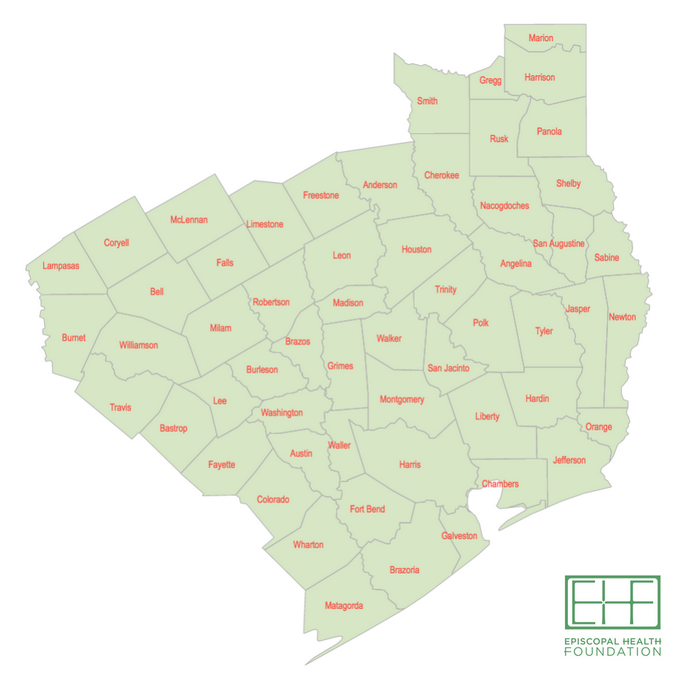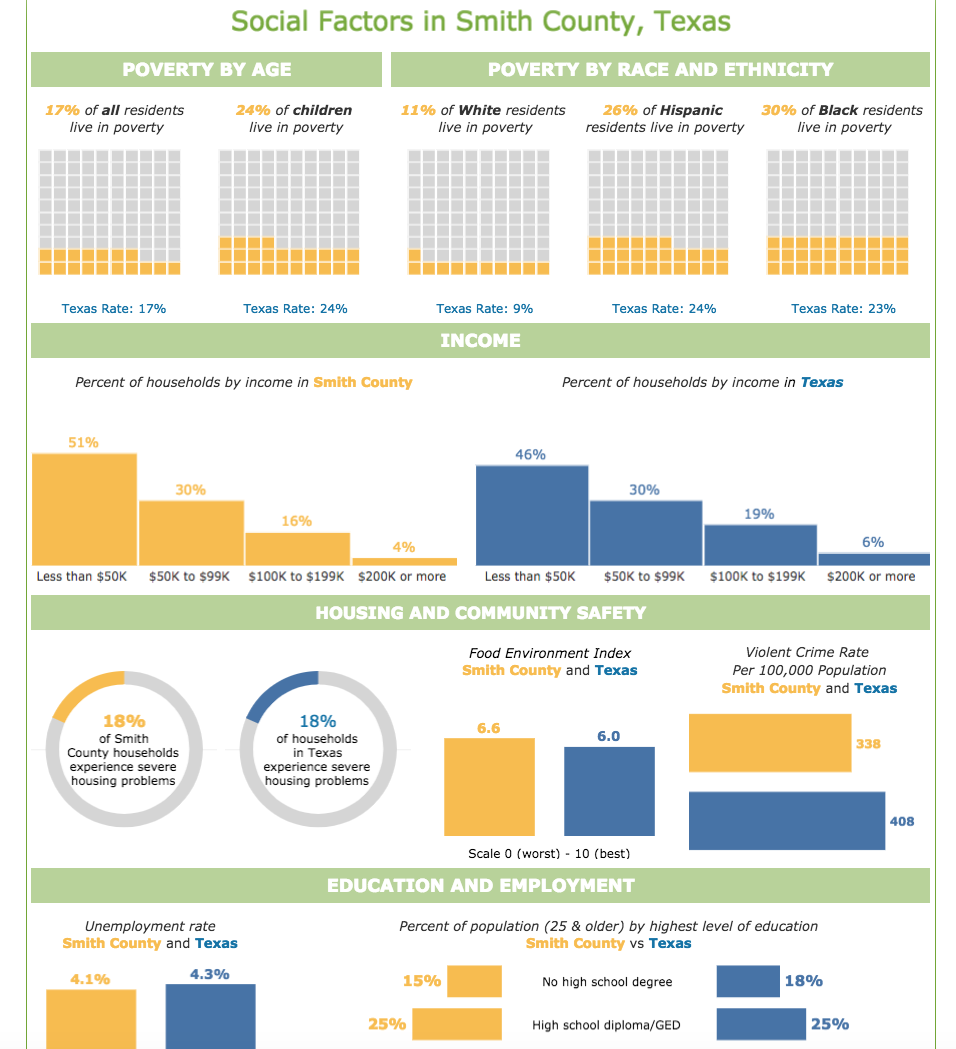Click on the map above to use EHF’s new County Health Snapshots tool
By Emily Dean, EHF Research Associate
EHF’s new 2018 County Health Snapshots present information for community leaders, clinics, churches and other organizations to assess health status and social determinants of health in each of the 57 counties served by the Episcopal Diocese of Texas (EDOT).
The data selected for the 2018 snapshots reflect EHF’s priority to serve vulnerable populations and improve health, not just healthcare across Texas. Along with information like rates of heart disease, diabetes and cancer, the County Health Snapshots also look at non-medical “social” factors that often have a direct impact on a person’s health. These factors include poverty rates, income information, housing and community safety data, and education and employment rates.
Together, this combination of information paints a more complete picture of the overall health and well-being of both children and adults who live in a particular county.
Information in the County Health Snapshots are presented in five topic areas:
- Health Outcomes – mortality, wellbeing, and child health
- Access to Care – insurance, health care providers, and preventable hospitalizations
- Social Factors – poverty, housing, food environment, crime, education, and employment
- Behavioral Factors – physical inactivity, substance abuse, and high-risk sexual behaviors
- Population Profile – demographics, language, and income
The information was collected from Robert Wood Johnson Foundation’s County Health Rankings, Centers for Disease Control and Prevention, U.S. Census Bureau, and Texas Department of State Health Services.
Five takeaways from a regional analysis of 2018 health data:
- The average uninsured rate in EDOT counties and Texas is 18.6% (children and adults age 0-64). Compared to the national average of 10.4%, Texas has the highest uninsured rates in the U.S. and more uninsured people than any other state.
- Health disparities are evident in premature death rates. On par with national trends, premature death rates are disproportionately higher among black populations in 54 of 57 EDOT counties.
- Chronic respiratory diseases are the third leading single cause of death among EDOT counties (53 per 100,000). That’s ahead of strokes and accidents which are the third and fourth leading single causes statewide.
- Drug or alcohol involved mortality rates are significantly higher in EDOT counties on average (1,015 per 100,000) compared to the Texas average (690 per 100,000). Note: this figure reflects deaths in which substances are involved and therefore exceeds single cause of death rates.
- As a region, EDOT counties have seen an increase in the health and mental health workforce since last year. However, some counties still have no licensed counselors, no community health workers, and low access to primary care physicians. Access to primary care physicians varies widely by county, ranging from 842 people per 1 provider to 18,666 people per 1 provider.
Click here to check out EHF’s 2018 County Health Snapshots


